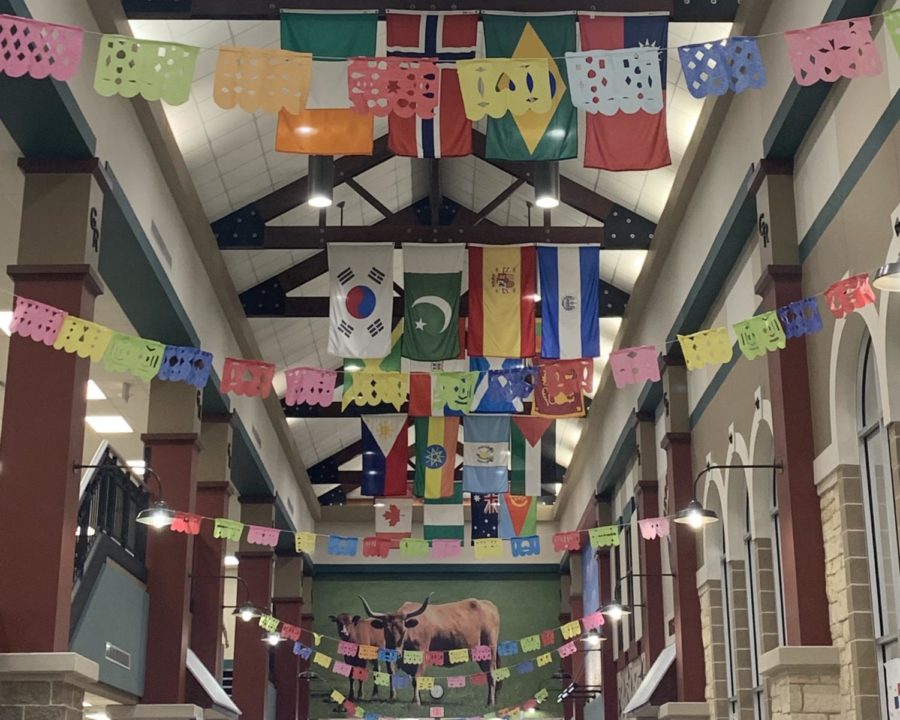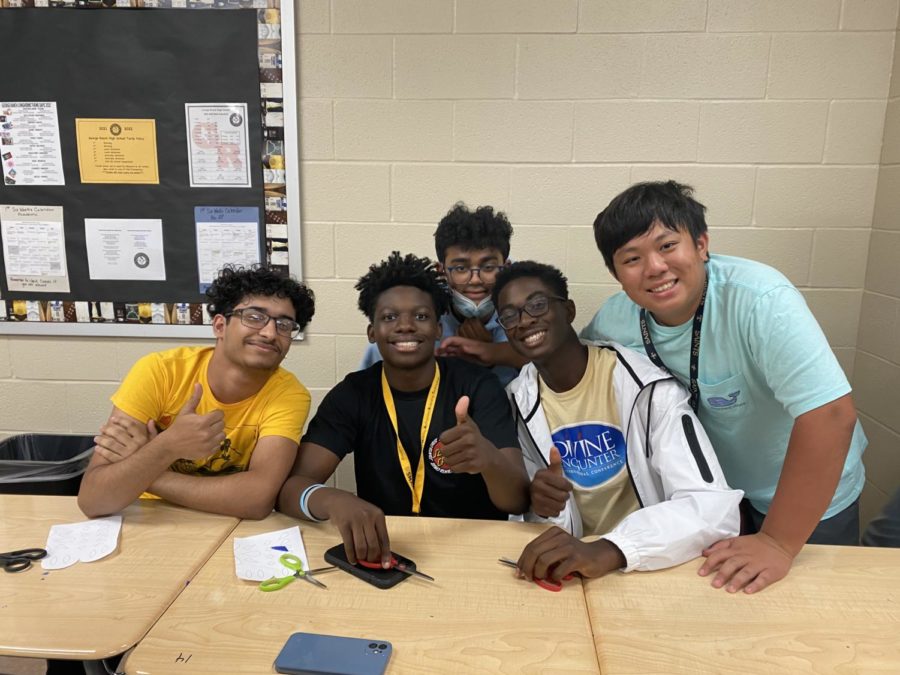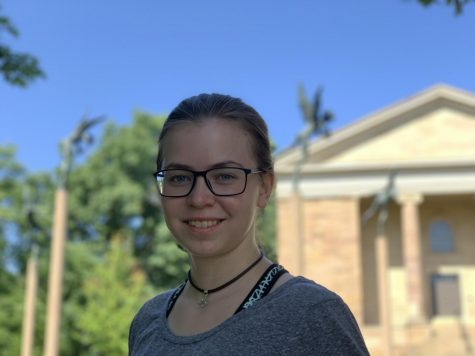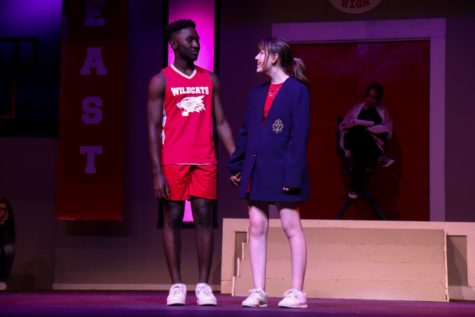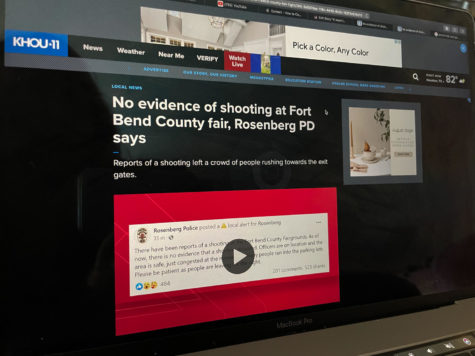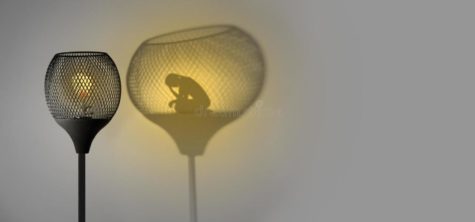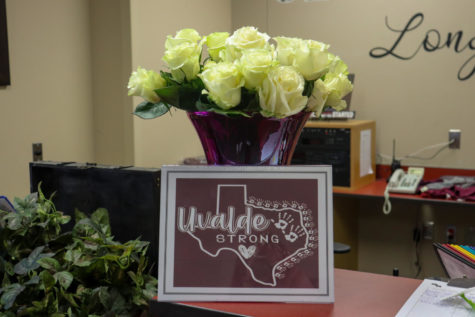Thank the Aztec Gods for Papel Picado
From Aztec gods to baptisms, the papel picado that adorns George Ranch Main Street reminds us of the beauty and color of Hispanic Heritage Month.
September 27, 2021
In sixteenth century Tenochtitlan the hallways might have been decorated with Aztec gods and goddesses made of fig and mulberry pulp.
Amatl these paper gods were called in Nahuatl. Mashing the pulp from fig and mulberry tree bark, cutting the dried pulp with obsidian knives, and presenting the outline of Aztec gods and goddesses was a primarily ceremonial event in Aztec tradition.
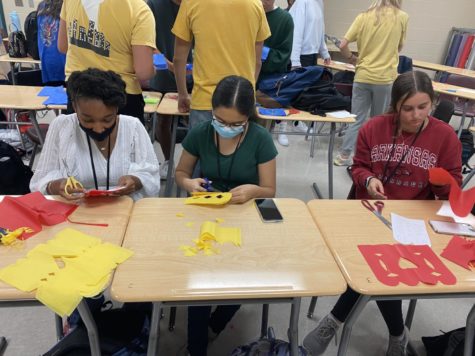
Now the hallways of George Ranch High School are adorned with the colorful papel picado, a descendant of amatl, translating to something along the lines of “perforated paper.”
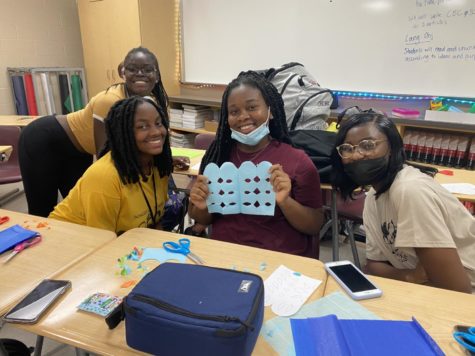
When the Spanish arrived in Mesoamerica in the early sixteenth century, trade between Mexico and the outer world increased greatly.
With trade lines between China and Acapulco, Mexico, fragile porcelains made their way to Central America along with the fine papel de China (Chinese paper) that wrapped them. This paper was perfect to turn into the papel picado banners that have become embedded in Mexican tradition.
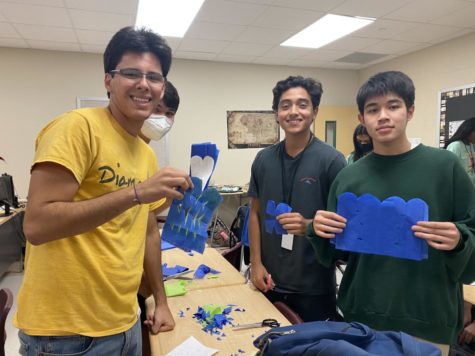
Today, papel picado is found in nearly every aspect of Mexican culture, from baptisms to funerals, Christmas to Día de los Muertos.
At George Ranch, they are hung across Main Street as they would be hung across the narrow streets in the colonial villages of Mexico. This serves as a reminder of the colorful cultures we celebrate during Hispanic Heritage Month.
“Putting up papel picado throughout the main hallway of the school is just a small part of getting people accustomed to the beautiful and unique aspects of Hispanic culture,” Virginia Bilic, a Senior, said. She and the rest of Spanish Honor Society and Student Council worked through the first week of Hispanic Heritage Month to cut and hang the papel picado across the halls. “The banners themselves are a form of art, and by displaying them in our school, by getting students involved and motivated to participate, we are able to embrace our cultural diversity and unite over the celebration of Hispanic Heritage Month!”



